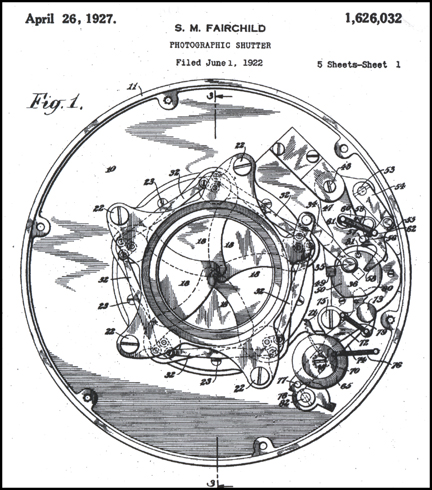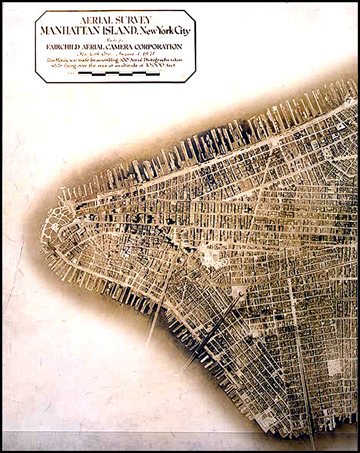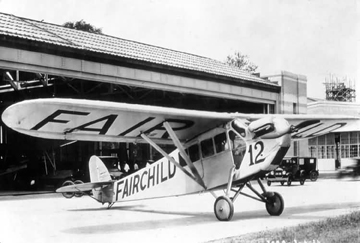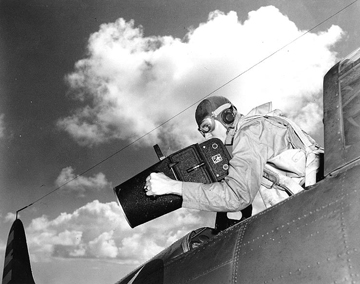IT ALL STARTED WITH A CAMERA
Sherman Mills Fairchild (1896-1971)
Copyright 2006 R. A. Suomala
Sherman Mills Fairchild invented and produced the first camera specifically intended for aerial photography. This was the first of a great many inventions and innovations produced by Fairchild. Some of these were:
1. Invented a large high speed, between-the-lens shutter for use in aerial mapping photography (1920).
2. Supplied General Billy Mitchell with a camera for the famous battleship bombing tests (1921 and 1923).
3. Made the first aerial survey of lower Manhattan, NYC (1921)
4. Founded Fairchild Aerial Camera Corporation (1920). See note 1.
5. Founded Fairchild Aviation (1925).
6. Built the first airplane specifically intended as a platform for aerial photography, the Fairchild FC-1.
7. Founded Fairchild Aerial Survey, Inc. (1927)
8. Organized AVCO (1929).
9. Established the Fairchild Recording Equipment Corporation (1931).
10. Founded Fairchild Semiconductor and initiated the growth of Silicon Valley (1957). See Note 2.
All of this from a man who came from a wealthy family and could have simply lived the good life, contracted tuberculosis at an early age, never graduated from a college or university and kept a low personal profile. He was a prolific inventor and venture capitalist. He was granted a total of 30 patents with the last being granted in the penultimate year of his life1.
Fairchild's first aerial camera incorporated his high speed between the lens shutter. This mechanism is described in US Patent 1,626,032, employed a "barrel spring" to supply the actuating force and a rotating inertial mass to retard the motion and control the shutter speed. The patent states that an iris diaphragm was not required since aerial photography was always done at a long distance hence depth of field is not a problem and the exposure could be controlled with the shutter alone. Photographers soon prevailed on Fairchild to include an iris diaphragm. The first sheet of the patent shown in figure 1 below illustrates the complexity of the shutter mechanism.

Figure 1

Figure 2
With this shutter Fairchild was able to take more than 100 individual pictures from an altitude of 1000 feet and create the photo-mosaic of lower Manhattan2 shown in figure 2 above (Library of Congress, Vault Map Collection).
Even today using photo-editing software the stitching of 100 images together in a mosaic would be a challenge. What a formidable task it must have been doing the whole operation manually in 1921.
Dissatisfied with the limitations of available aircraft for aerial mapping, Fairchild developed the FC-1. It had an enclosed heated cabin, good ground visibility, was inherently stable and had wings that could be folded back for storage or transport.

FC-1 Photographed ca. 1926, courtesy The Fairchild Corporation
Aerial cameras are designed for two different uses, those being mapping and reconnaissance (oblique views). The original Fairchild mapping camera made 5X7 images but the size was later increased to 7X7. The Fairchild F-1 oblique camera was developed for tactical aerial reconnaissance. The picture below shows a Fairchild F-1 aerial camera (20 inch lens) being operated from the rear cockpit of a SBD-3 "Dauntless" aircraft on board USS Yorktown (CV-5) circa April 1942.

Official U.S. Navy Photograph, now in the collections of the U.S. National Archives.
A later oblique model, the F-25, produced 5X7 images, had a 210 mm (8.25 inch) f/4 lens and used a 12 exposure cut film and plate magazine.
Fairchild's father, George, along with Thomas Watson, were founding partners of IBM. Sherman
Fairchild started his incomplete academic studies with one year at Harvard but had to leave due to ill health (TB). The University of Arizona records show Fairchild as a student from 1917-1919. He attempted to enlist in the armed forces but was turned down for reasons of health. He subsequently attended Columbia University but left before graduating.
Fairchild helped found both Pan American and American Airlines. The Sherman Fairchild Foundation continues to fund many worthy academic and health enterprises.
Whittier College3 has a collection of at least 500,000 items derived from photographs produced by Fairchild Aerial Surveys, Inc. or its subsidiaries or contractors from 1927-1965.
My own personal knowledge of Fairchild began in the 1940's from the many aircraft produced during WWII. As a student hooked on jazz in the 1950's I recall reading that Fairchild had installed two Steinway grand pianos in his NYC penthouse and produced some fantastic recordings of duo piano jazz improvisations by Marian McPartland and Teddy Wilson. Just one more of Fairchild's many interests.
The assets of the Fairchild Aerial Camera Corporation now belong to BAE Systems, Reconnaissance & Surveillance Systems Division4. Coincidentally a company I retired from was also bought by BAE Systems, which fortunately (for me) continues to fund my retirement.
Note 1. Fairchild lived to see his cameras used on the Apollo moon missions (Ref: National Aviation Hall of Fame).
Note 2. Fairchild Imaging produced the first commercial CCD in 1973 (100X100 pixels)
http://www.fairchildimaging.com/main/history.htm
Acknowledgement: The author wishes to express appreciation to Donna Morton, Manager of the University of Arizona's Annual Fund for her assistance in locating Fairchild's records.
1. http://library.caltech.edu/sherman/fairchild.htm
2. http://www.loc.gov/rr/geogmap/guide/gmillapa.html
3. http://www.whittier.edu/fairchild/home.html
4. http://www.,na.baesystems.com/heritage.cfm
To learn more about the history of aerial photography done by the US Navy in WWII see the following web site:
http://www.navyphoto.org/Carol/contents.html
For more descriptions of Fairchild aerial cameras see:
http://pws.prserv.net/varney/20cms/cameras.htm